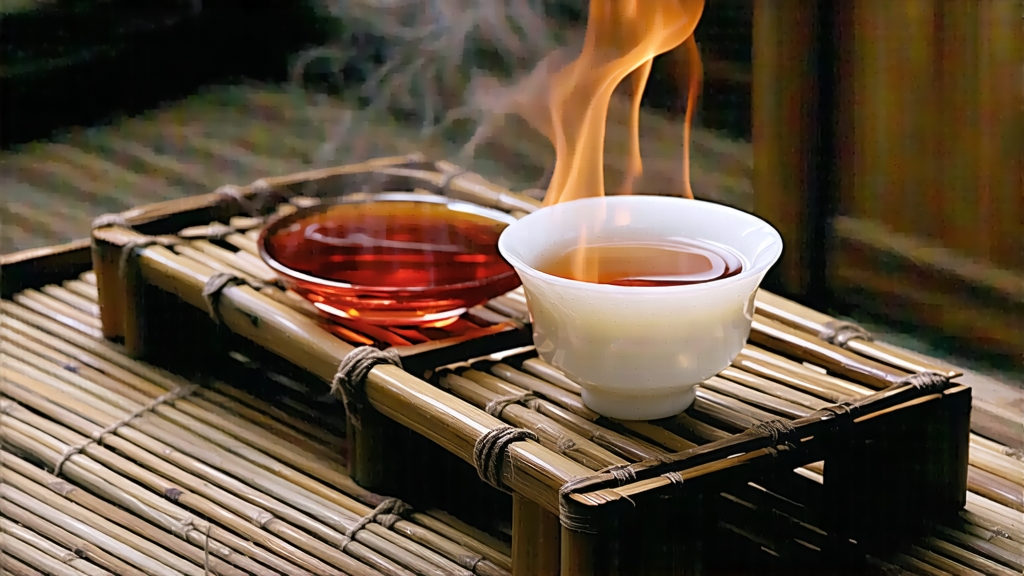
Long before English tea clippers raced across the oceans and Victorian drawing rooms echoed with the clink of bone-china, a small village tucked into the rocky folds of China’s Wuyi Mountains accidentally created the world’s first fully oxidised leaf. Locals call it Zhengshan Xiaozhong; the West knows it as Lapsang Souchong. Today the name evokes images of crackling campfires and whisky-barrel sweetness, yet behind the romance lies a 400-year saga of war, trade, and meticulous craft that turned a humble mountain shrub into the prototype for every black tea on earth.
Origin in the mist
The Wuyi range in northern Fujian is a UNESCO geopark of sheer cliffs, mineral-rich ravines and a perpetual cloak of cloud. Villagers in Tongmu, the highest settlement, still speak an old Minbei dialect and measure distance by the number of tea fields one can walk before the dew burns off. Here, in 1646, Qing troops forced farmers to abandon withering leaves overnight; by morning the green leaf had reddened. Trying to salvage the crop, the farmers dried it quickly over available pine fires. The smoky, honey-coloured liquor astonished the first Dutch traders who carried it to Europe, where it was christened “bohea” (from the local “Wuyi”) and became the generic word for black tea. Thus Lapsang Souchong is not merely a style; it is the primordial black tea from which Assam, Ceylon and Keemun later diverged.
Three faces of Souchong
Walk through Tongmu today and you will see three distinct teas sharing the same genetic cultivar, the small-leaf Wuyi Qizhong.
- Traditional pine-smoked Zhengshan Xiaozhong: the original. The finished strip is glossy, coal-black and smells like a sweet cigar.
- Unsmoked Zhengshan Xiaozhong: developed for the modern Chinese palate. It keeps the longan-fruit and mineral notes but loses the campfire, revealing a burgundy liquor reminiscent of Burgundy wine.
- Wild Arbor Xiaozhong: picked from feral bushes seeded by birds at 1 400 m. The leaves are tinier, the oxidation slower, yielding a whisky-laced aroma that lingers like an old sherry cask.
Craft: from cliff to cup
The making of authentic Lapsang is governed by national-geographic indication rules that forbid mechanisation in the core zone. Every kilo demands 55 000 buds plucked only in May, when two leaves and a bud still wear their spring down. The leaf is first withered over crackling pine embers in two-storey wooden sheds; the rising smoke is trapped by woven bamboo mats on which the tea rests. Oxidation follows in oak barrels lined with wet cloth, the leaf turned every twenty minutes for five hours until it smells of ripe apricot. Finally the tea is rolled into tight strips and dried for eight hours above resin-rich pine logs whose blue smoke imparts the unmistakable tar-and-treacle perfume. The entire process stretches across three days and three nights, watched by masters who judge readiness by the sound of a leaf crackling between molars.
How to brew it like a Tongmu elder
Western teapots flatten the drama; gongfu is kinder to the smoke. Use 5 g in a 120 ml porcelain gaiwan, water just off the boil (95 °C). Rinse for two seconds to wake the leaf; discard. First infusion: 10 seconds. The liquor emerges the colour of Chinese dates, the aroma a balance of pine resin and dried longan. Second infusion: eight seconds—here the sweetness peaks. By the fifth infusion extend to 40 seconds; the smoke recedes, exposing a dark-cocoa body. Good Tongmu leaf yields ten infusions, the final one tasting of wet slate and warm honey.
Tasting notes: a lexicon for the nose and palate
Start by sniffing the dry leaf: you should detect three layers—top note of pinewood embers, mid note of lychee or longan fruit, base note of cooling iron. Slurp the first infusion loudly; let it atomise across the palate. A top-grade Lapsang will show no acrid harshness; instead the smoke behaves like lapsang whisky, integrating into caramelised sugar. Look for a cooling sensation at